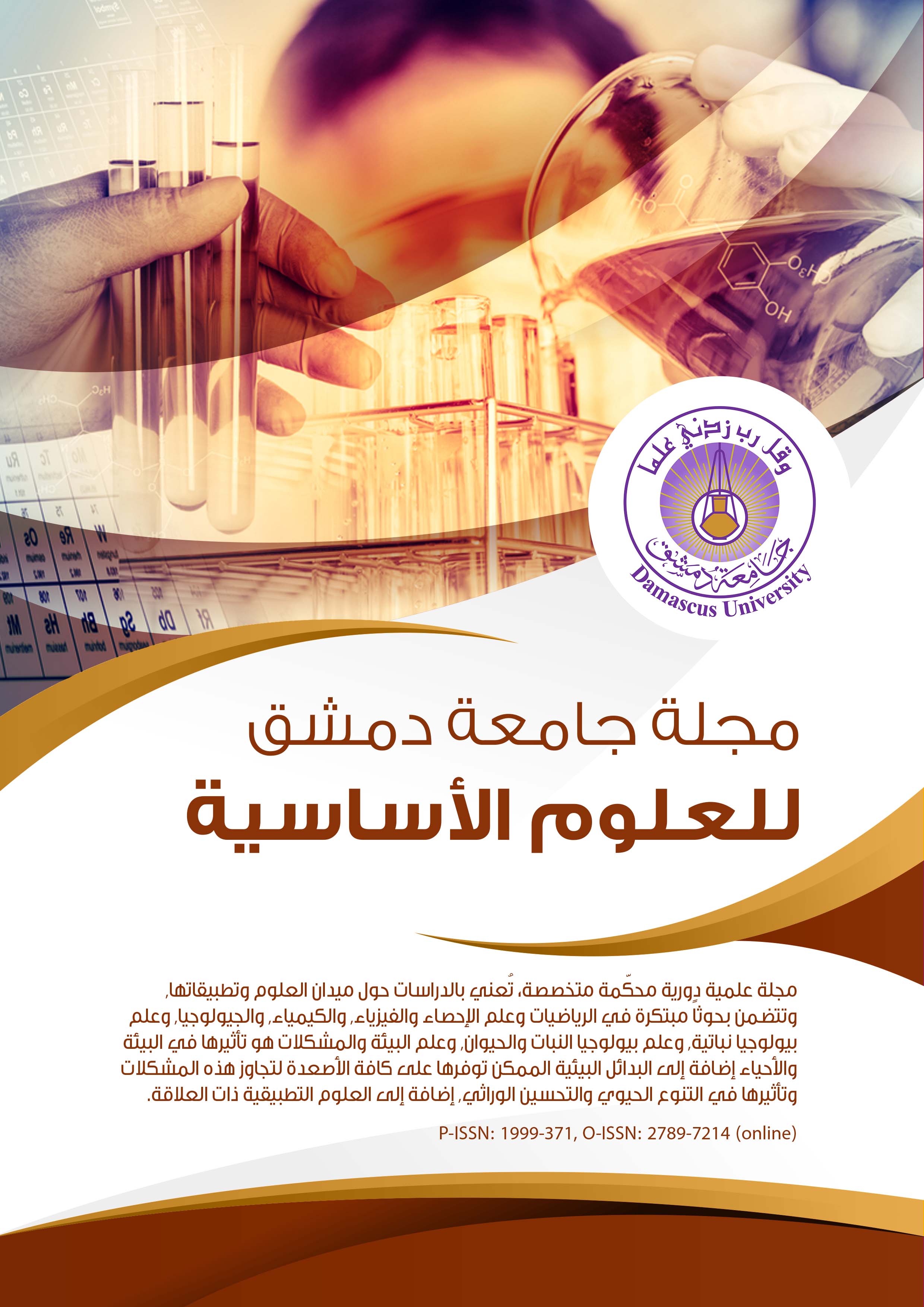مقارنة الفعالية المضادة للتأكسد للقرنفل والزنجبيل
الكلمات المفتاحية:
الفعالية المضادة للتأكسد ، القرنفل ، الزنجبيل ، الفينولات ، الفلافونويداتالملخص
كُشف كيفياَ عن بعض المركبات الفعالة حيوياً في مستخلصات القرنفل والزنجبيل المائية والايتانولية (70%) والأستونية (70%) المستخلصة باستعمال جهاز الأمواج فوق الصوتية لمدة 1 ساعة, وعُينت الفعالية المضادة للتأكسد للمستخلصات فعُينت القدرة على تثبيط جذور DPPH وحُددت كمياً الفينولات والفلافونويدات الكلية في المستخلصات.
وجد أن كمية الفينولات الكلية في القرنفل أعلى في المستخلص الأستوني 70%(431.38±0.27mgGAE\g), وللزنجبيل وجد أن المستخلص الأستوني 70% هو الأعلى (36.57±0. 28mgGAE\g), وُجد أن كمية الفلافونويدات في المستخلص الأستوني 70% هي الأعلى وذلك بالنسبة لكل من القرنفل والزنجبيل حيث بلغت (297.14±0.612mgQE\g) و(20.80±0.332mgQE\g) على التوالي, ووجد أن نسبة التثبيط الأفضل للقرنفل في المستخلص الإيتانولي70% بقيمةIC50 (0.144±0.001mg\ml) ,وللزنجبيل في المستخلص الإيتانولي 70% بقيمة IC50 (0.624±0.002mg\ml) .

